ECOS Dishwashing Liquid – Safe or Toxic?
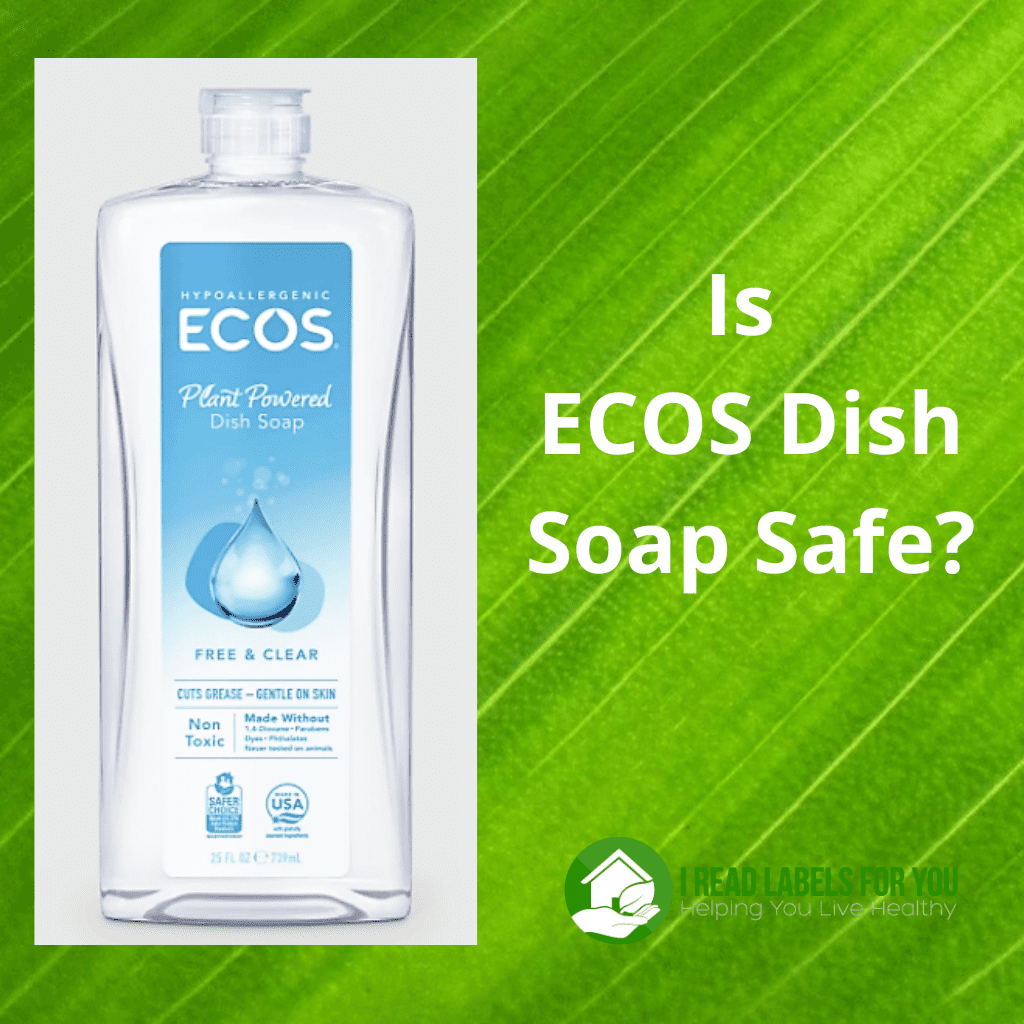
Do you buy your dishwashing liquid at a grocery store during your regular shopping trip? ECOS dishwashing liquid is a popular brand you can find in most grocery stores. Read this comprehensive ECOS dish soap review to learn about its ingredients and make an informed decision about its safety. To see what position ECOS Free and Clear dish soap takes in my “worst-bad-better-best” review, read my Non-Toxic Dishwashing Soap Guide. To get my review of 73 popular DISHWASHER detergents, visit my Dishwasher Detergent Guide. Also, find out how ECOS laundry detergent options compare to those of other popular brands in my Guide to the Safest Laundry Detergents.
In this post:
- In-Depth Research Helps with Making Informed Decisions
- ECOS Dishwashing Liquid Ingredients
- Tetrasodium Glutamate Diacetate, Citric Acid, and Water
- Preservatives in ECOS Dish Soap
- Surfactants in ECOS Dishwashing Liquid
- Are ECOS Free and Clear dish soap ingredients safe?
- Ingredients with Potential Risks
- Summary of the ECOS Dishwashing Liquid Post
In-Depth Research Helps with Making Informed Decisions
On average, we spend five and a half hours on washing the dishes weekly, even with the help of dishwashers. Hence, it is best to do it with non-toxic dish soap to prevent allergic reactions and even long-term health effects.
That is to say, we want to avoid dishwashing liquids that consist of toxic petrochemicals and additives that make them look attractive and smell nice. Therefore, I am here to help you find a safe dishwashing product out of those on the market. Is ECOS dishwashing liquid the one? Stay with me to find out!
In fact, it is my mission to help make the consumer goods market a safer place as far as health is concerned. I strongly believe that consumers should not have to be exposed to any health risks caused by potentially harmful ingredients. So, I do product research and study ingredients in depth to draw conclusions about their safety based on scientific information. (Learn more about the steps I take in my research here.)
Actually, the subject of chemicals and toxic substances is personal to me. Regrettably, I lost my father to cancer when he was just 57. Plus, I have undergone a series of events that have opened my eyes to the importance of using non-toxic products. (Learn more about my breast implants and autoimmune diseases and explant surgery.)
That said, let us dive into ECOS dish soap ingredients so you can make your own decision regarding its safety.
ECOS Dishwashing Liquid Ingredients
For starters, I would like to point out that after reformulation, ECOS ingredients are better now (methylisothiazolinone is gone!). This is a testament to consumer power. So, thank you all for contacting companies and providing them with your feedback!
At present, the Hypoallergenic Ecos Free and Clear dish soap consists of the following ingredients:
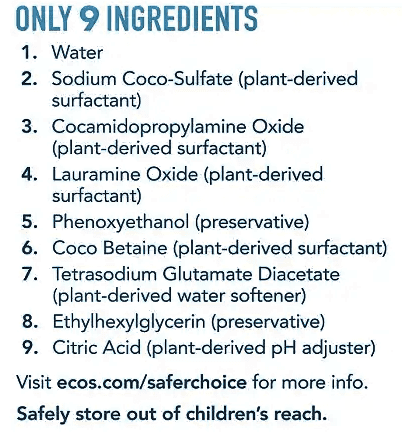
Let us talk about each of them briefly, shall we?
Tetrasodium Glutamate Diacetate, Citric Acid, and Water
To begin, tetrasodium glutamate diacetate, a chelating agent, serves as a water softener in the ECOS Free and Clear formulation. Importantly, the European Chemicals Agency reports no notified hazards for this substance.
Next, citric acid in this hypoallergenic dish soap functions as a pH adjuster. It is safe in small concentrations for this purpose. (Learn about sodium benzoate and citric acid used in combination in my post Sodium Benzoate & Citric Acid Myth.)
As for water, while it sounds innocuous, it provides a breeding environment for microbial and fungal growth. Therefore, the presence of water indicates the need for preservatives. (Check out my comprehensive review of scientific studies on bacteria in consumer goods in my post about WaterWipes baby wipes.)
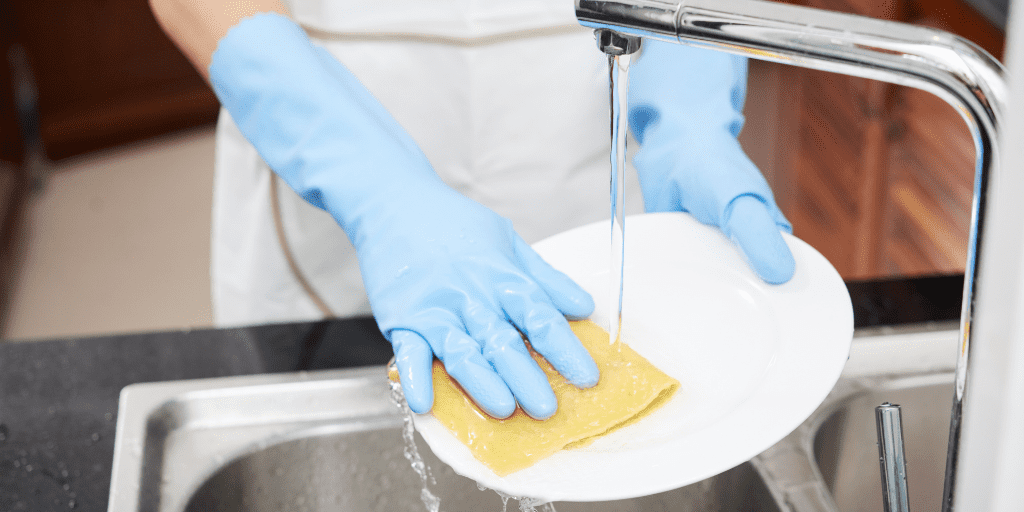
Preservatives in ECOS Dish Soap
As I mentioned previously, ECOS dishwashing liquid used to have methylisothiazolinone as one of its preservatives. With it gone now (yay!), there are two preservatives in the formula:
- phenoxyethanol
- ethylhexylglycerin.
First, in my opinion, phenoxyethanol is better than some of its alternatives, such as formaldehyde-releasing preservatives, parabens, and methylisothiazolinone. However, the American Society of Contact Dermatitis lists it among allergens even in concentrations as low as 1%. The main reason I am cautious about phenoxyethanol is its manufacturing process. Please read my post about phenoxyethanol in skin care to find out more about it. On a positive note, it is not registered as an environmental toxin.
Second, ethylhexylglycerin has become a common preservative in natural and green personal and skin care products nowadays. It is popular because it is derived from plants or grains. Although the American Society of Contact Dermatitis added it to its list of allergens in 2014, the concerning concentration is 5% or greater. I believe it is okay to use products with ethylhexylglycerin because it is normally used in concentrations smaller than 5%.
Surfactants in ECOS Dishwashing Liquid
There are four surfactants in ECOS Free and Clear dish soap: sodium coco-sulfate, cocamidopropylamine oxide, lauramine oxide, and coco betaine.
To start with, what unites these ECOS Free and Clear surfactants is the lack of long-term safety data.
Indeed, the PubMed database shows only one result for sodium coco-sulfate, a coconut-based synthetic surfactant. According to this safety assessment, the Cosmetic Ingredient Review Panel deemed sodium coco-sulfate safe in the concentration described in the report. However, the assessment is based on a study of an entire group of surfactants, not specifically this one.
As for lauramine oxide, and coco betaine, the good news is that the Cosmetic Ingredient Review Panel found them non-allergenic. In addition to that, lauramine oxide is found non-mutagenic. Yet, not much is known about their long-term health effects.
While the Cosmetic Ingredient Review Panel found cocamidopropylamine oxide generally safe in rinse-off products, it recognized that, just like cocamidopropyl betaine, it may contain allergenic impurities, including amidoamine and dimethylaminopropylamine. If a manufacturer minimizes the impurities, the risk of reaction should be low. (You can learn more about that and coco betaine vs. cocamidopropyl betaine in my blog post about cocamidopropyl hydroxysultaine.)
In sum, based on the available information, the ECOS dish soap surfactants have not been found carcinogenic, allergenic, and endocrine disrupting. Hence, they seem to be safer than some other surfactants.
Are ECOS Free and Clear dish soap ingredients safe?

On the one hand, I would not call the ECOS dishwashing liquid ingredients the safest. As you have seen above, many of them lack long-term safety data. For safety’s sake, it is a good idea to wear gloves to prevent potential skin absorption of any chemicals. Plus, wearing gloves allows one to use hotter water, which helps with breaking down grease using smaller amounts of dish soap.
On the other hand, I appreciate the fact that ECOS soap is formulated without any ingredients that arouse serious concerns. Indeed, ECOS Free and Clear dish soap ingredients are not on the State of California Proposition 65 List, in the Endocrine Disruption Exchange database, or on the Environment Canada Substance List.
To clarify, I believe it is best to avoid dishwashing products with the following ingredients:
- colorants
- ethoxylated ingredients
- fragrance (including “natural fragrance”)
- harsh preservatives (benzisothiazolinone, methylisothiazolinone, methylchloroisothiazolinone, and formaldehyde-releasers).
Below, you will see the reasons I consider these ingredients risky for health. Again, I appreciate it that ECOS Free and Clear formulation uses none of them. (I would avoid the scented versions of ECOS dish soap, though.)
Ingredients with Potential Risks
| Ingredient | Concern |
| Benzisothiazolinone | – sensitizer – may cause an allergic skin reaction (source) – very toxic to aquatic life (source) |
| Colorants | – may contain residues of heavy metals and of petroleum-based carcinogenic contaminants (learn more about heavy metals in makeup here) |
| Ethoxylated ingredients (PEGs, Polysorbates, -eth (e.g., Laureth-7)) | – may be contaminated with carcinogenic 1,4-dioxane (learn more about ethoxylated ingredients and hidden ingredients in body products here) |
| Formaldehyde-releasers (e.g., methenamine, quaternium-15, DMDM hydantoin) | – associated with widespread allergic contact dermatitis (learn more about formaldehyde in products here) |
| Fragrance (including “natural fragrance”) | – a mixture of multiple ingredients including allergens, carcinogens, and endocrine disruptors (learn more about natural fragrance here) |
| Methylchloroisothiazolinone (MCI) | – sensitizer – fatal if swallowed, inhaled, or in contact with skin – may cause irritation or an allergic reaction (source) |
| Methylisothiazolinone (MI) | -sensitizer – fatal if inhaled, toxic if swallowed or in contact with skin – may cause an allergic reaction (source) |
Summary of the ECOS Dishwashing Liquid Post
While I would not say that ECOS Free and Clear dish soap is absolutely safe for everyone, relatively speaking it has a lot of pluses.
First, it contains no fragrance, colorants, strong sensitizers, and ethoxylated ingredients.
Second, it makes good suds and breaks down grease well, even in hard water (as opposed to saponified soaps).
Third, none of the ECOS dishwashing liquid ingredients has come up in any of the following: the State of California Proposition 65 List, Endocrine Disruption Exchange database, and Environment Canada Substance List.
Moreover, the Design for the Environment, an EPA partnership program, labels ECOS cleaning products safe for people and the environment. It means that the concentrations of chemicals in the formulation were assessed and deemed safe based on the available knowledge. (Nevertheless, I recommend wearing gloves to prevent potential absorption of chemicals with no long-term safety data into your skin.)
So, considering the alternatives, ECOS soap in its unscented version is one of the best ones in my Non-Toxic Dishwashing Soap Guide. Additionally, in my Guide to the Safest Laundry Detergents, you can see how ECOS laundry detergent options compare to those of other popular brands.
To get my review of 73 popular DISHWASHER detergents, visit my Dishwasher Detergent Guide.
Also, visit the IRLFY shop for non-toxic skincare and household products and take advantage of a private consultation with me for help with healthy living. And consider applying to the Savvy Consumer Circle where you can interact with like-minded savvy consumers.
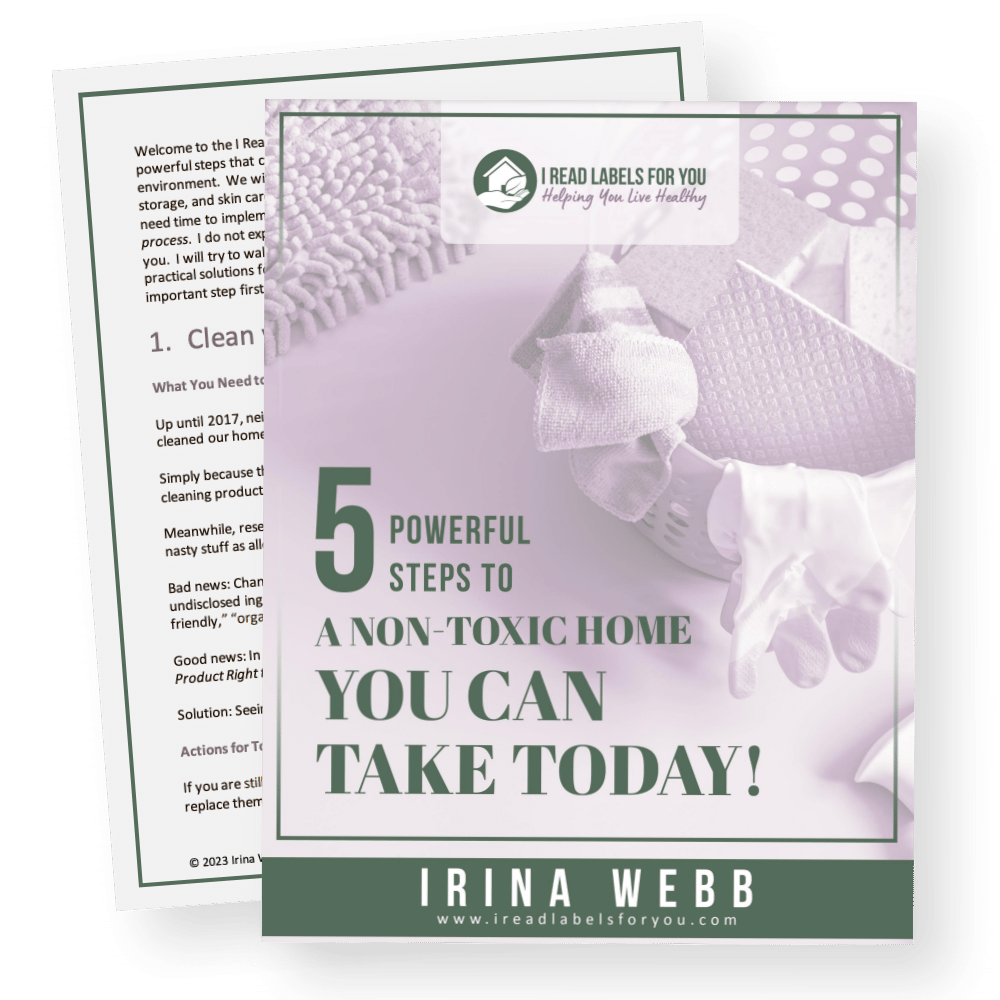
Download The Free Guide!
5 Powerful Steps To A Non-Toxic Home
Join our informed consumer community and get our free guide the “5 Powerful Steps To A Non-Toxic Home”.

 Written by
Written by 
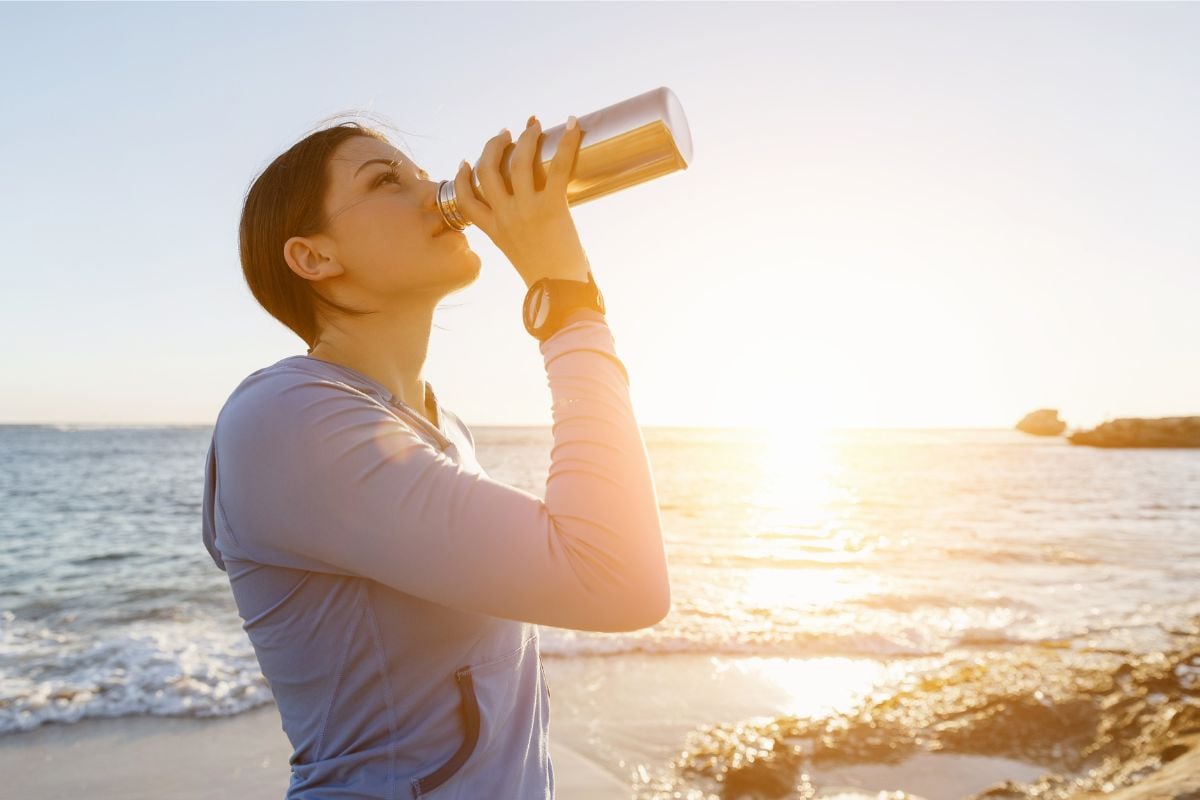

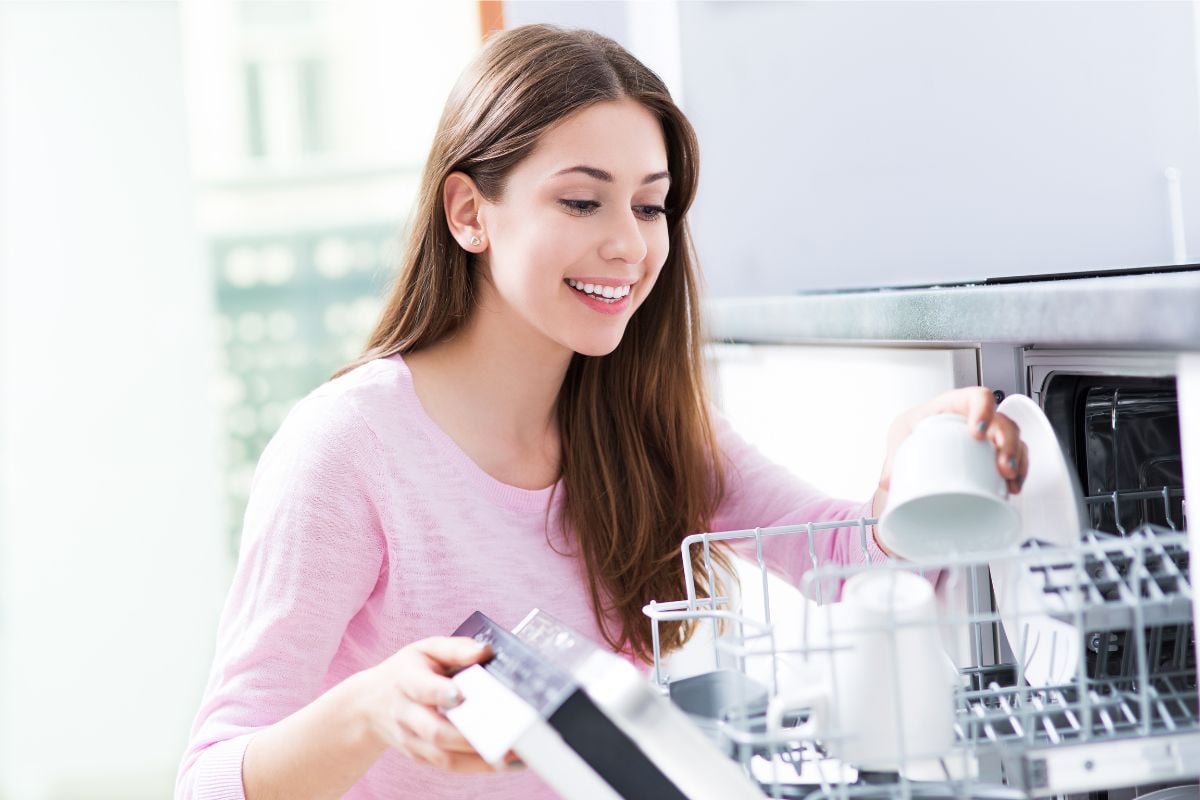


how about this product of ECOS dish wash ?
Thank you
Hi Ellie! We appreciate your interest! Irina will be happy to help you with your question in a private consultation: https://ireadlabelsforyou.com/services/
Hi, what are your thoughts on ecover automatic dish powder or tablets. I didn’t see those same preservatives listed. Thx!
Hello, Melissa! We appreciate your interest! Irina will be happy to help you with your question in a private consultation: https://ireadlabelsforyou.com/services/
Hi, Melissa! We appreciate your interest! Irina will be happy to help you with your question in a private consultation: https://ireadlabelsforyou.com/services/
What is the current status on the MI in Ecos dishmate free and clear liquid? I was recently diagnosed with the MI allergy so I bought it because it was not listed. But I definitely react to it? Thanks.
Hi, Karen: It is out, I am updating the post. ~Irina
Had to look up MI allergy….that’s me!! everthindg getting worse….down to having no clean clothes or dishes, without dizzy/nauseous, and now vertigo/vomiting with cardboard boxes. Just trying to find a place in Florida where I can get MCI/MI testing. learned much today. Thanks. sami
It might be good to look into the ingredients that are labelled as “plant derived”. Simply because something was made from plants does not make it safe. There are manufacturers that make SLS (a carcinogen) out of coconut oil. Does that make it less carcinogenic? Obviously not.
You are absolutely right, Susan. You got it! ~Irina
Cocamide DEA derived from coconut oil is on the California Proposition 65. By the way, SLS has not been classified as a carcinogen. ~Irina
Have you checked out ecover zero fragance free dishsoap. I have been researching ingredients but am not sure about it
Funny that you asked, Judy. I just bought it and am using it now. ~Irina
Hi Irina. Since you used ecover zero, what do you think about it?
Ecover unscented dish soap DOES HAVE methisothiazolone!!!!! I just got a call back from the company today after seeing a review on Amazon that stated it is lying on the label. The rep for Ecover said that the manufacturer adds it!!! And they don’t put it on the label. She said she will for sure bring up to her higher ups the need for transparency. I almost bought a 6 pack on Amazon and now know to stay away. Please spread the word!!! How many other companies are lying about ingredients due to obvious loopholes??
The truth comes out sooner or later. I am glad that they started disclosing. ~Irina
I am disappointed to find out here that Ecos is now the maker of my favorite Dishmate. I’ve tried Ecos laundry detergent and the scent makes me gag. Of course I bought it from Costco. I don’t think Costco can truly carry anything I approve of.
Unlike the old Ultra Dishmate, there is no label of “1, 4-Dioxane free” shown on the new Ecos dish soap bottle. Does this mean they are no longer free of 1,4-Dioxane? I am hesitating to buy the new one.
As a consumer, we never know for sure. That’s I try to avoid ingredients that may contain 1,4-dioxane altogether. Check out this list of dishwashing liquids here. Thanks. ~Irina
Have you looked into any of the crystal spray deodorants?
How can I set your blog as the recipient of all of my Amazon purchases? I’d be happy to switch my settings, but I think I need your link.
Hi, Kamila! Yes – I have looked into crystal spray deodorants and I do not recommend them. Crystal spray deodorant contains potassium alum, which is a form of aluminum. More about aluminum is in this post here. Have you seen my list of deodorants my husband likes? https://ireadlabelsforyou.com/non-toxic-deodorant-guide/
As for Amazon, please bookmark any page of my blog, such the ones above, as Amazon. When you want to shop on Amazon, open my blog page and click on the Amazon link on the bottom of the right panel. THANK YOU SO MUCH!